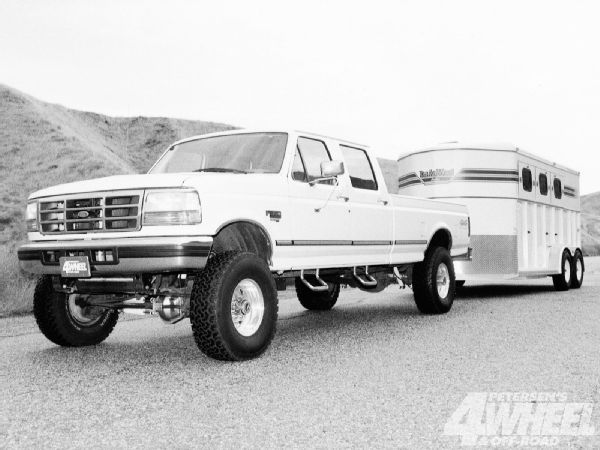
You've heard the claims made by aftermarket computer chip manufacturers for years: 30 hp, 40 hp, and even 50 hp simply by altering your vehicle's timing and fuel calibrations, both controlled by the vehicle's computer. That's why we were doubtful when Steve Deitsch at Off Road Unlimited called to tell us about a U.S. Gear Power Chip for Ford 7.3L Power Stroke turbodiesel engines.

We told him, "Stevie, do a rear-wheel dyno test at an independent place, change the chip, and test it again-then we'll see if we're interested in an article." A week later, he called again and said we weren't going to believe what they'd found: a bigger power gain than U.S. Gear claimed in its brochure and a significant increase in fuel economy. "We'll be right over."
The Power Chip plugs into the diagnostic port of the Ford Powertrain Control Module (PCM) and recalibrates it to maximize vehicle performance by altering the air/fuel mixture, turbo boost, and automatic-transmission shift and lock-up points. It was designed with towing heavy trailers in mind, but the added power and fuel economy is welcome under any circumstance.
The truck used for our test was a lifted '96 F-350, which the owners, Jeff and Nancy Burns, used frequently to haul a two-horse trailer. The 35x12.50R16.5 tires with stock axle gears had taken a lot of oomph out of the Power Stroke, and the owners were looking for a simple way to improve the power. Eric Garding at Off Road Unlimited had the PCM pulled, the Power Chip plugged in, and the truck back on the road in a matter of hours, and the power gains speak for themselves. What no one expected, however, was for fuel economy to jump from 14 mpg to 17 unloaded and from 11 to 14 loaded!
Power Gains We're always skeptical when we hear of grandiose power gains from simple modifications, so we insisted this truck be tested at an independent facility. Bob Jennings Dyno Shop was one of the first companies in Southern California to use a rear-wheel dyno for tuning in addition to fact-finding. The truck was tested the day before the U.S. Gear Power Chip was installed and then again after a few thousand miles had been clocked with the chip in place. The power increases were beyond what U.S. Gear claimed and are validated every time the throttle is mashed.
RPM Stock HP With HP Stock Torque With Torque HP Power Chip Gain Torque Power Chip Gain 2,000 150 230 80 394 603 209 2,500 165 238 73 347 500 153 3,000 175 240 65 306 420 114 PhotosView Slideshow

